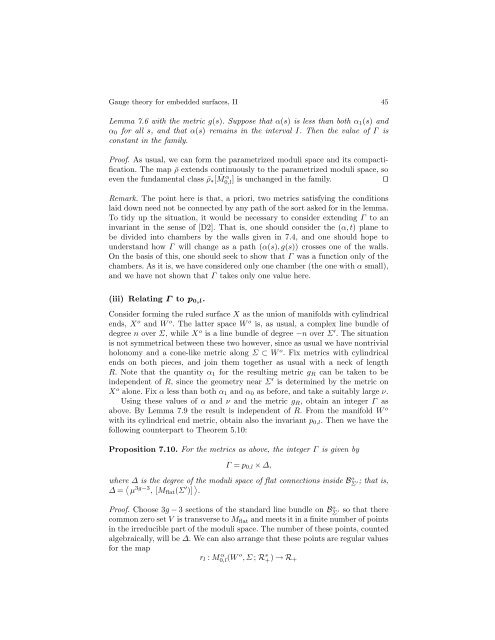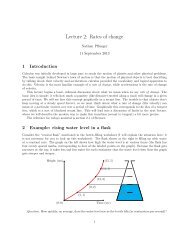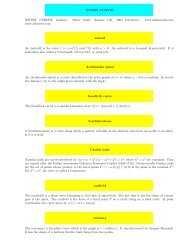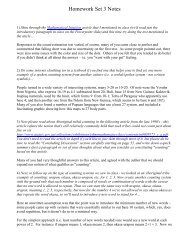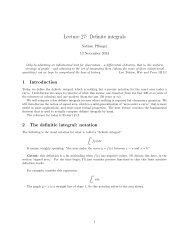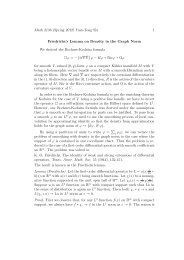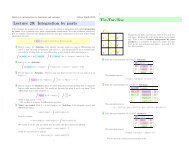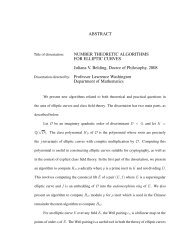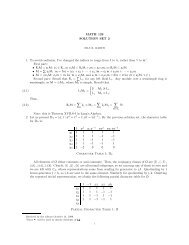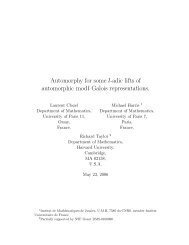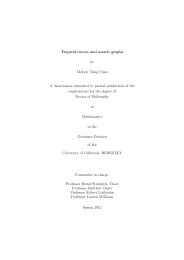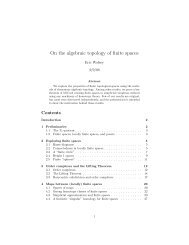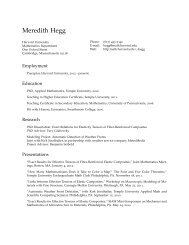Gauge theory for embedded surfaces, II
Gauge theory for embedded surfaces, II
Gauge theory for embedded surfaces, II
Create successful ePaper yourself
Turn your PDF publications into a flip-book with our unique Google optimized e-Paper software.
<strong>Gauge</strong> <strong>theory</strong> <strong>for</strong> <strong>embedded</strong> <strong>surfaces</strong>, <strong>II</strong> 45<br />
Lemma 7.6 with the metric g(s). Suppose that α(s) is less than both α1(s) and<br />
α0 <strong>for</strong> all s, and that α(s) remains in the interval I. Then the value of Γ is<br />
constant in the family.<br />
Proof. As usual, we can <strong>for</strong>m the parametrized moduli space and its compacti-<br />
fication. The map ¯ρ extends continuously to the parametrized moduli space, so<br />
even the fundamental class ¯ρ∗[ ¯ M α 0,l ] is unchanged in the family. ⊓⊔<br />
Remark. The point here is that, a priori, two metrics satisfying the conditions<br />
laid down need not be connected by any path of the sort asked <strong>for</strong> in the lemma.<br />
To tidy up the situation, it would be necessary to consider extending Γ to an<br />
invariant in the sense of [D2]. That is, one should consider the (α, t) plane to<br />
be divided into chambers by the walls given in 7.4, and one should hope to<br />
understand how Γ will change as a path (α(s),g(s)) crosses one of the walls.<br />
On the basis of this, one should seek to show that Γ was a function only of the<br />
chambers. As it is, we have considered only one chamber (the one with α small),<br />
andwehavenotshownthatΓ takes only one value here.<br />
(iii) Relating Γ to p0,l.<br />
Consider <strong>for</strong>ming the ruled surface X as the union of manifolds with cylindrical<br />
ends, X o and W o . The latter space W o is, as usual, a complex line bundle of<br />
degree n over Σ, while X o is a line bundle of degree −n over Σ ′ . The situation<br />
is not symmetrical between these two however, since as usual we have nontrivial<br />
holonomy and a cone-like metric along Σ ⊂ W o . Fix metrics with cylindrical<br />
ends on both pieces, and join them together as usual with a neck of length<br />
R. Note that the quantity α1 <strong>for</strong> the resulting metric gR can be taken to be<br />
independent of R, since the geometry near Σ ′ is determined by the metric on<br />
X o alone. Fix α less than both α1 and α0 as be<strong>for</strong>e, and take a suitably large ν.<br />
Using these values of α and ν and the metric gR, obtain an integer Γ as<br />
above. By Lemma 7.9 the result is independent of R. From the manifold W o<br />
with its cylindrical end metric, obtain also the invariant p0,l. Then we have the<br />
following counterpart to Theorem 5.10:<br />
Proposition 7.10. For the metrics as above, the integer Γ is given by<br />
Γ = p0,l × ∆,<br />
where ∆ is the degree of the moduli space of flat connections inside Bo Σ ′; that is,<br />
∆ = µ 3g−3 , [Mflat(Σ ′ )] .<br />
Proof. Choose 3g − 3 sections of the standard line bundle on Bo Σ ′ so that there<br />
common zero set V is transverse to Mflat and meets it in a finite number of points<br />
in the irreducible part of the moduli space. The number of these points, counted<br />
algebraically, will be ∆. We can also arrange that these points are regular values<br />
<strong>for</strong> the map<br />
rl : M α 0,l (W o ,Σ; R s + )→R+


